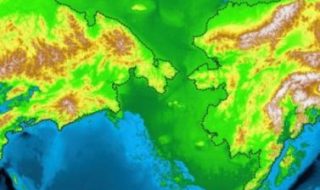A new study comes to dismiss the popular idea that Native Americans draw their genetic heritage from Polynesians or European peoples.
The first humans to reach the Americas came from Siberia in a single group some 23,000 years ago, at the height of the last Ice Age, says the new study. On their way to Alaska, they hanged around in the northern regions for a few thousands of years before moving deeper into North and South America.

They lived in low-land, shrubby areas for an estimated 10.000 years, but archaeological evidence is hard to come by to help reach a definite number.

Credit: Wlliam Manley, Institute of Arctic and Alpine Research, University of Colorado.
They settled on a land bridge that connected Eurasia to the Americas, named Beringia. The ice sheets extended south into the Pacific Northwest, Wyoming, Wisconsin and Ohio. Large expanses of Siberia and Beringia were cold but lacked glaciers. As the planet warmed up however, ice melted, sea levels rose the area got slowly flooded, creating what we today know as the Bering Strait. These early settlers were forced to relocate and some of them found their way to America, but their settlements, and any traces of their daily lives were lost under the waters.
The lack of archaeological evidence makes precisely dating these events very tricky, but scientists are confident that genetic sequencing can help us with that:
“There is some uncertainty in the dates of the migration and the divergence between the northern and southern Amerindian populations. But as we get more ancient genomes sequenced, we will be able to put more precise dates on the times of migration,” said one of the study authors Yun Song, associate professor at University of California, Berkeley.
The analysis, using the most comprehensive genetic data set from Native Americans to date, was conducted using three different statistical models. The data consisted of the sequenced genomes of 31 living Native Americans, Siberians and people from around the Pacific Ocean, and the genomes of 23 ancient individuals from North and South America, spanning a time between 200 and 6,000 years ago.
The international team concluded that the northern and southern Native American populations diverged between 11,500 and 14,500 years ago.
The southern branch peopled Central and South America as well as part of northern North America. The findings will be presented in the forthcoming issue of the journal Science.
“The diversification of modern Native Americans appears to have started around 13,000 years ago when the first unique Native American culture appears in the archaeological record: the Clovis culture,” said Rasmus Nielsen, a professor at the California university. “We can date this split so precisely in part because we previously have analysed the 12,600-year-old remains of a boy associated with the Clovis culture,” Nielsen added.


